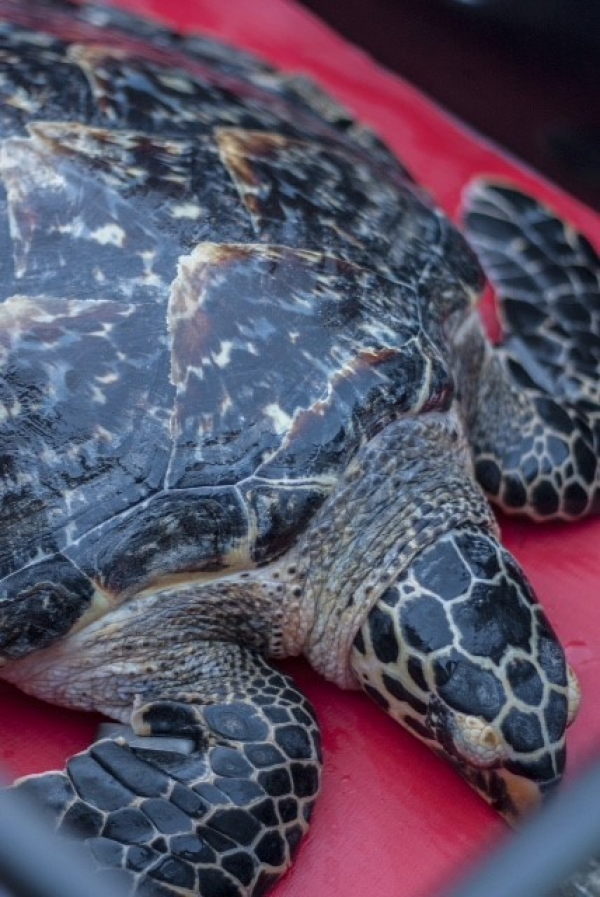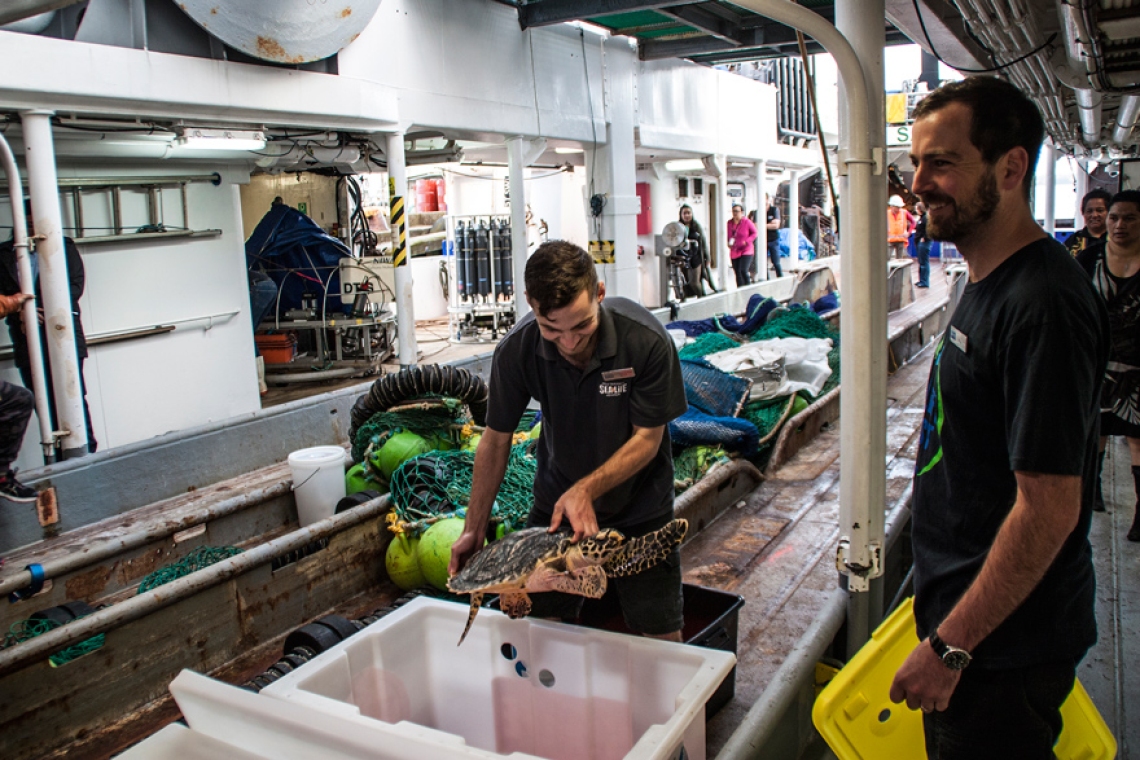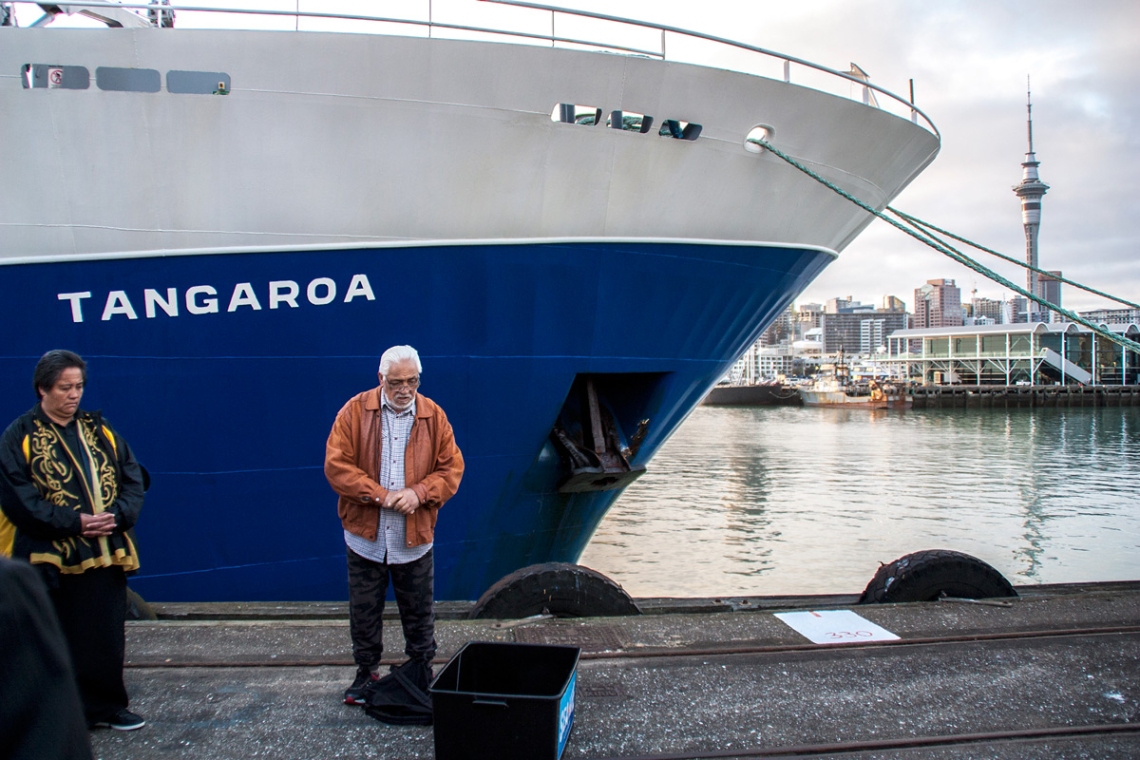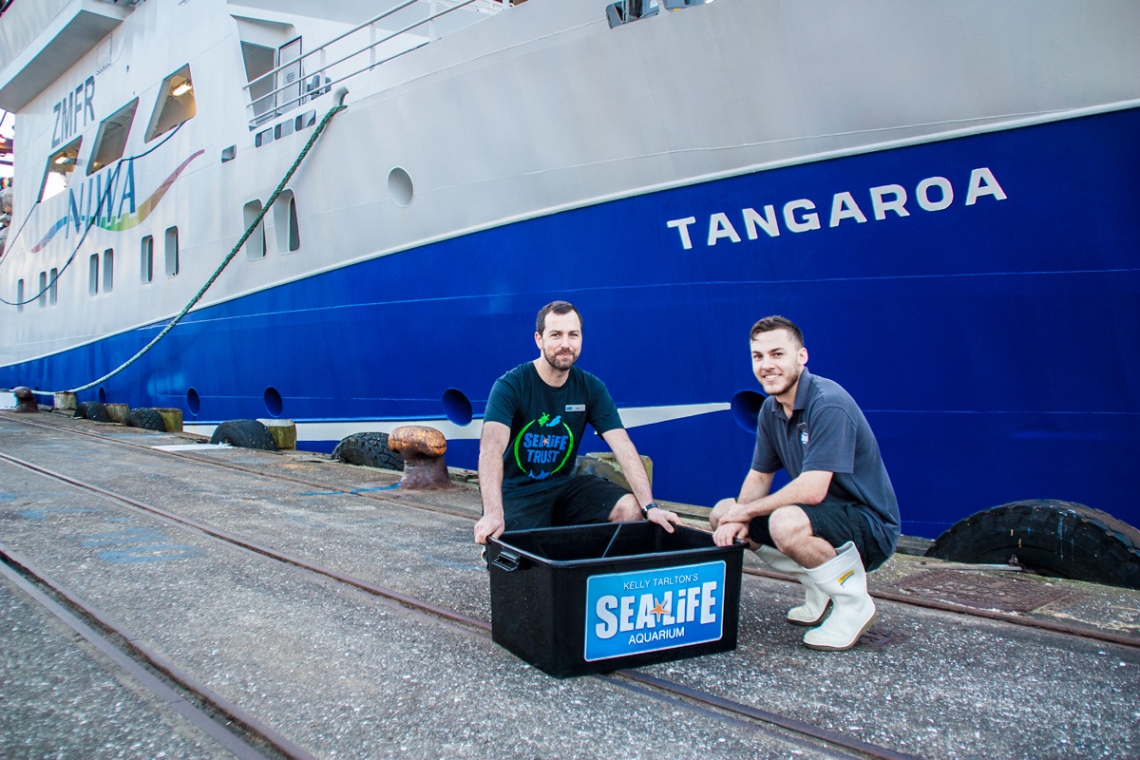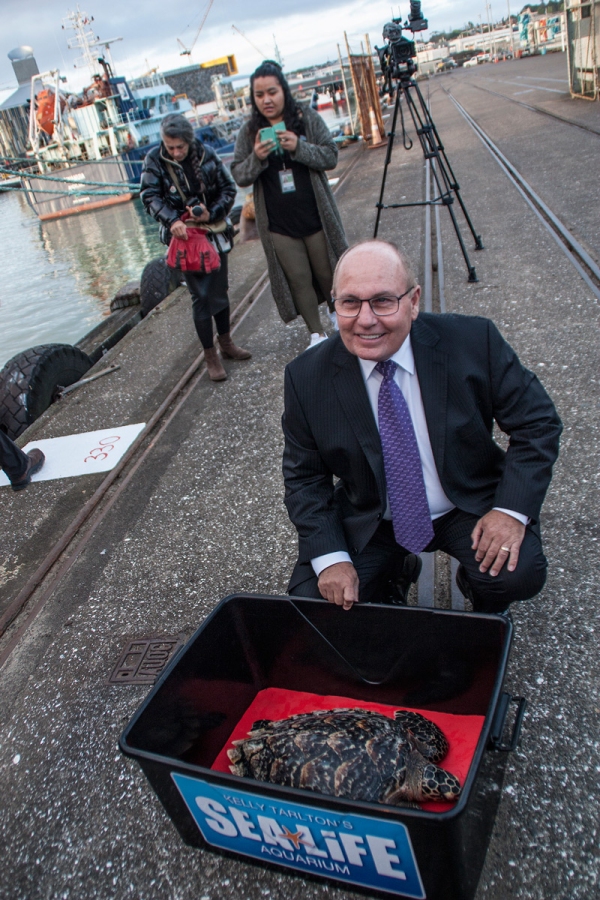A critically endangered turtle today began a two-day journey back to its home in Rangitāhua, the Kermadecs.
The turtle, named Koha by Ngāti Kuri, is a Hawksbill Sea Turtle, and has been nursed back to health by Kelly Tarlton’s Sea Life Aquarium in association with the SEA LIFE Trust after being found weak and emaciated near Dargaville in September, 2014.
Today, in a ceremony at Auckland’s Wynyard Wharf led by Ngāti Whatua and Ngāti Kuri leaders, Koha was blessed before being carried aboard NIWA’s flagship research vessel Tangaroa bound for the Kermadecs.
The name Koha was chosen to represent a gift being returned to Te moana nui a Kiwa, the turtle’s home in the Pacific Ocean.
Scientists aboard Tangaroa today left today to undertake a 20-day scientific expedition in the region.
Voyage leader and NIWA principal scientist Dr Malcolm Clark said the team were honoured to have Koha aboard for the first part of the trip.
“It is a rare privilege to be able to return a critically endangered creature to its natural habitat. We are very much looking forward to releasing it, knowing we have played a small part in helping the conservation of this magnificent species.”
Kelly Tarlton’s SEA LIFE Aquarium turtle expert Harry Josephson-Rutter, Aquarist said it was likely Koha was swimming in New Zealand waters as part of its early years, where turtles typically travel the world’s oceans via major ocean currents.
“The Hawksbill Sea Turtle is listed as critically endangered. Having already been hunted to near extinction throughout history for its attractive shell, sea turtles are now under threat from ocean pollution and habitat destruction. They prefer the warmer waters well north of New Zealand, and as a juvenile, Koha eats coral, shellfish and crustaceans such as crabs and shrimps” said Josephson-Rutter.
“Koha was found in a severely emaciated and lethargic state near Dargaville in September 2014. After being flown to Auckland and initial assessment, subsequent treatment and rehabilitation at Kelly Tarlton’s has included tube feeding a special diet, antibiotics, slowly reintroducing solid food, stabilising its body temperature, before being moved into a larger tank to gain more strength and fitness prior to release.”
The plan is to release Koha on Saturday morning near Raoul Island, providing the weather is calm.
The voyage to the Kermadec region is a collaborative expedition between NIWA, Auckland Museum, Kelly Tarlton’s, Department of Conservation, Auckland and Massey Universities, PEW Foundation and Te Papa.
Scientists want to learn more about the habitats and diversity of the region, especially in the deeper waters where little work has been undertaken. They will undertake sampling between 50 and 3000m deep on the eastern flank of the Kermadec Ridge.
A second strand of research will extend knowledge of how marine mammal populations use the area, while a third will see specialist divers examining the shallow reef communities. Together the research will significantly improve understanding of the biodiversity and ecosystem structure in the region and how that contributes to New Zealand’s overall biodiversity.
Tom Trnski of Auckland Museum, said Auckland Museum has a 120 year history with Kermadecs and the most comprehensive biological collection from the Kermadecs in the world.
"The Kermadec Rangitahua Ocean Sanctuary contributes a valuable baseline to global scientific research and we will be keeping people around the world up to date with our findings via daily blog updates,” he said.
Read more about the Kermadec Expedition.

